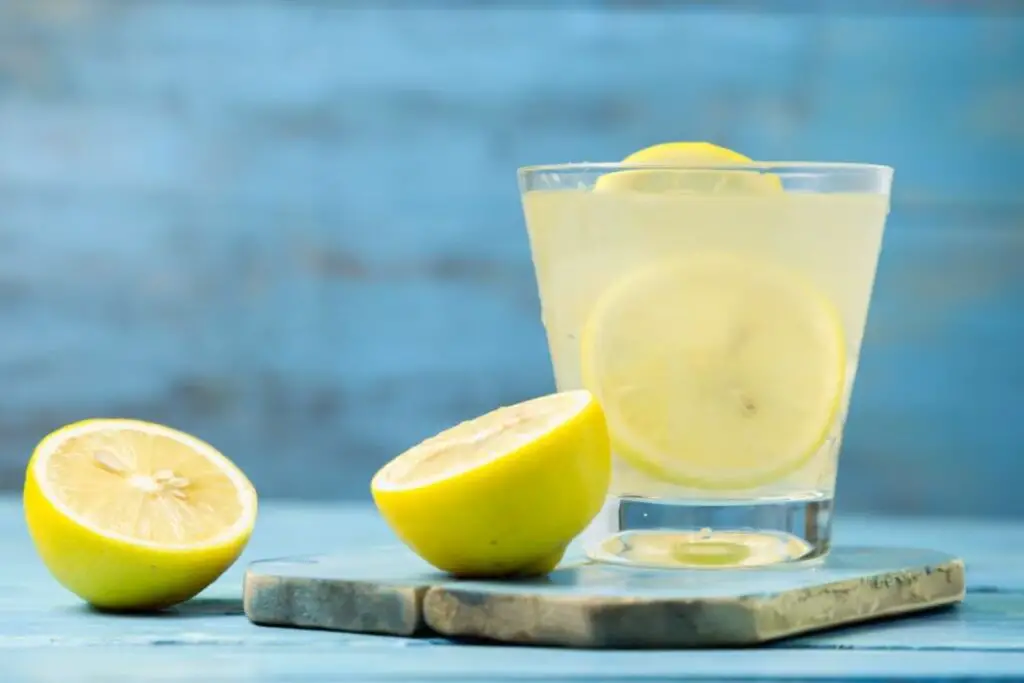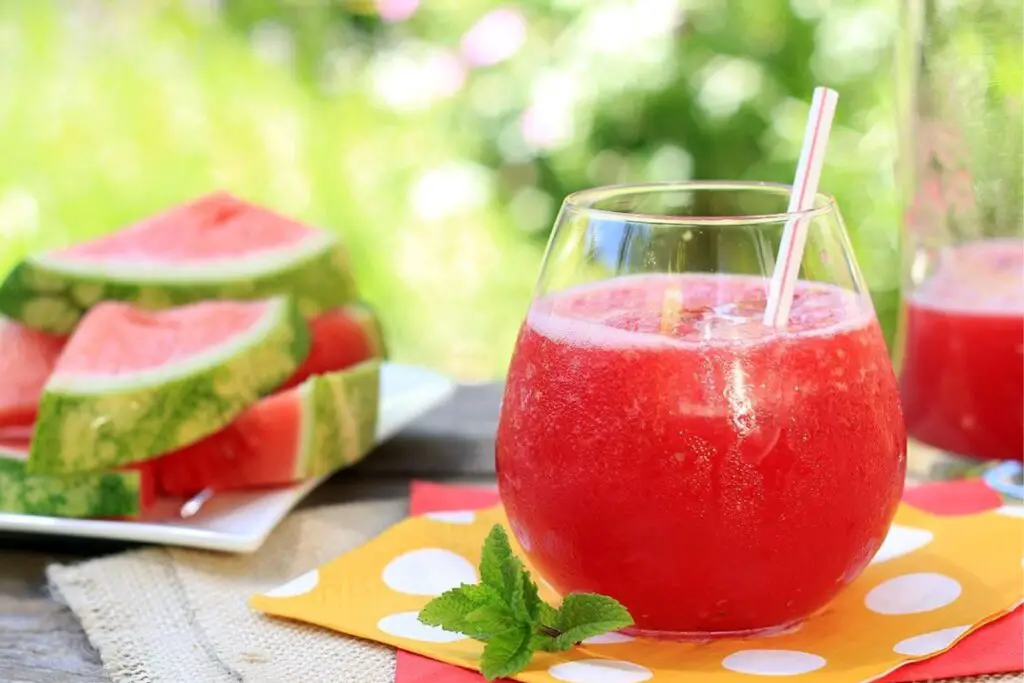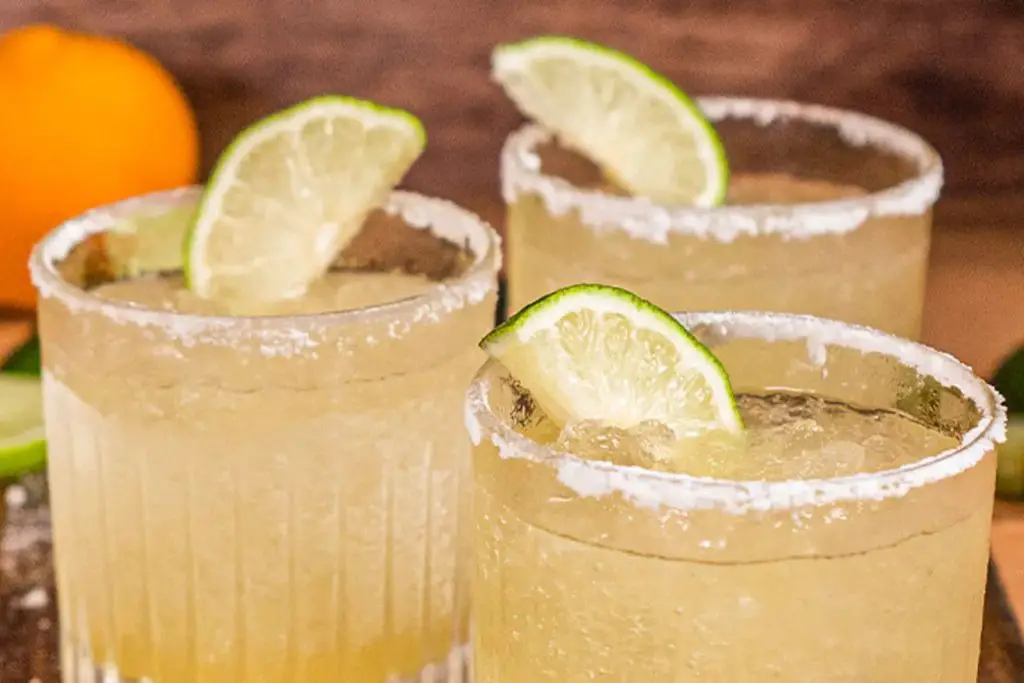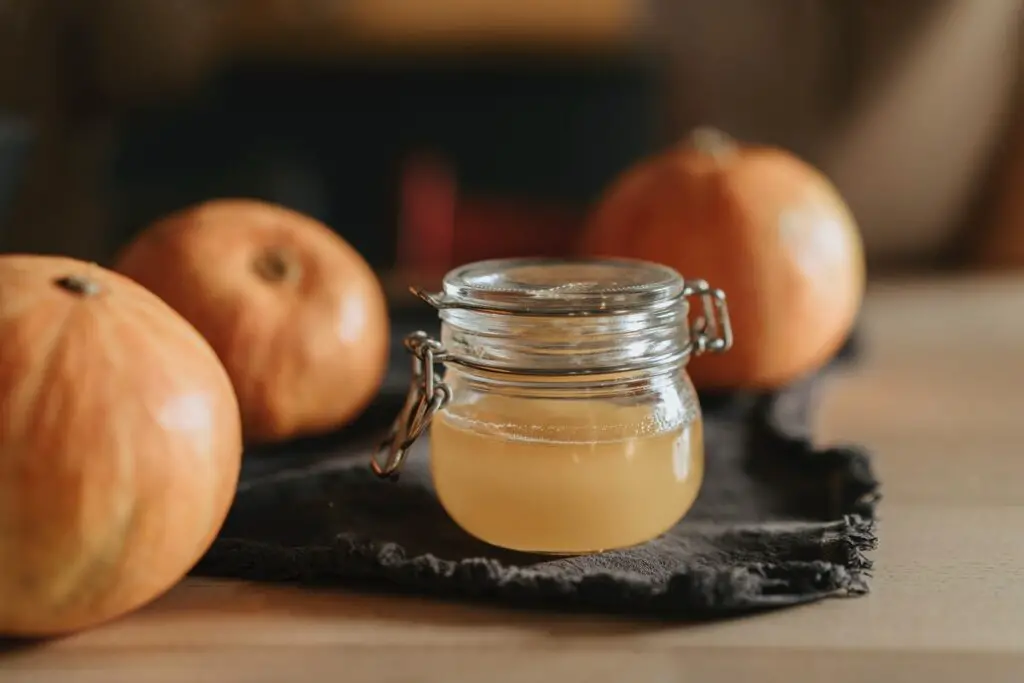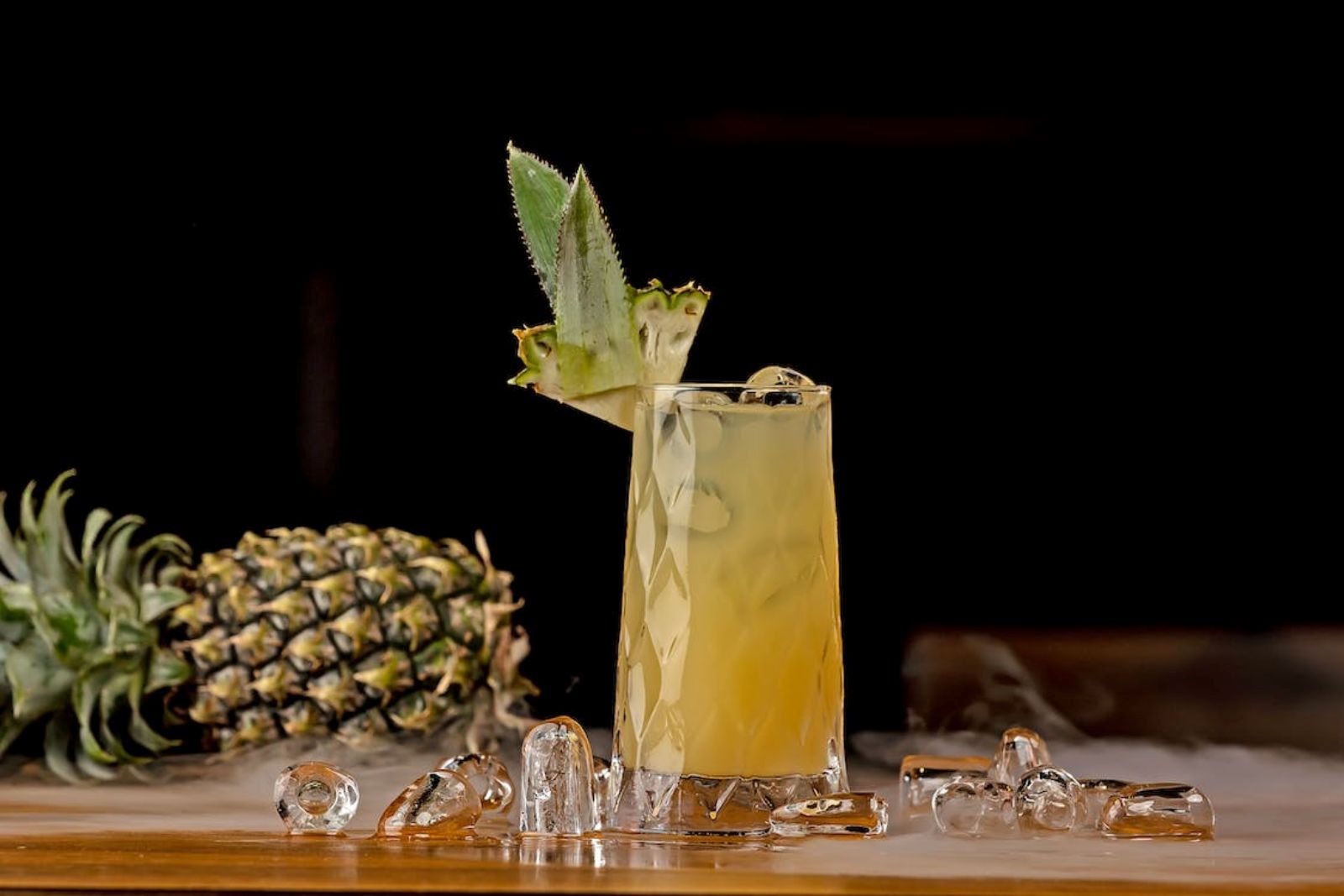
Pineapple juice is a delicious and refreshing beverage that can be enjoyed on its own or used as an ingredient in various recipes. If you have a surplus of pineapple juice or want to preserve it for future use, freezing is a simple and effective method. Freezing pineapple juice allows you to enjoy its tropical flavor and nutritional benefits even when fresh pineapples are out of season. By following these easy steps, you can freeze pineapple juice and maintain its taste and quality. Read on for a comprehensive guide on freezing pineapple juice.
Here’s a step-by-step guide on how to freeze pineapple juice:
- Step 1: Choose fresh pineapple juice
- Step 2: Prepare the containers
- Step 3: Pour the juice into the containers
- Step 4: Seal the containers
- Step 5: Label and date the containers
- Step 6: Place the containers in the freezer
- Step 7: Freeze until solid
- Step 8: Store the frozen pineapple juice
- Step 9: Thaw and enjoy
Step 1: Choose fresh pineapple juice
When it comes to freezing pineapple juice, starting with fresh and high-quality juice is crucial. Opting for fresh juice ensures that you capture the best flavor and nutritional content before the freezing process.
Fresh pineapple juice has a vibrant and tropical taste that is perfect for enjoying on its own or incorporating into various recipes. It retains the natural sweetness and tanginess of the pineapple fruit, providing a refreshing and delightful beverage.
Avoid using pineapple juice that contains additives or preservatives, as these can interfere with the freezing process and alter the taste of the juice. Such additives may include artificial sweeteners, colorings, or stabilizers, which can affect the overall quality and flavor of the juice after it is frozen.
Choosing juice without additives or preservatives ensures that you are freezing a pure and unadulterated product. This allows you to maintain the authentic taste and aroma of the pineapple, providing a frozen juice that closely resembles the fresh version.
Additionally, freezing fresh pineapple juice without additives or preservatives preserves its nutritional benefits. Pineapple juice is rich in vitamins, minerals, and enzymes that offer various health benefits, such as boosting the immune system, supporting digestion, and promoting overall well-being. Freezing fresh juice allows you to retain these nutritional properties for future consumption.
Is it necessary to strain pineapple juice before freezing?
Straining the pineapple juice before freezing is not mandatory, but it can help remove any pulp or solids that may affect the texture of the juice when thawed. If you prefer a smoother consistency, straining is recommended before freezing.
Step 2: Prepare the containers
To freeze pineapple juice effectively, it’s important to choose the right containers and ensure they are prepared correctly. Here’s how to do it:
Firstly, select freezer-safe containers or ice cube trays that are suitable for storing liquids. These containers should be specifically designed to withstand low temperatures without cracking or breaking. Look for containers made of materials like plastic or glass that are labeled as freezer-safe.
Before using the containers, make sure they are clean and dry. Wash them with warm soapy water and rinse thoroughly to remove any dirt, residue, or odors. Ensure that there are no lingering traces of previous food items as this can affect the taste and quality of the frozen pineapple juice.
If you prefer to freeze the pineapple juice in individual portions or for later use in recipes, using ice cube trays is a convenient option. Choose ice cube trays that come with a lid or cover to prevent freezer odors from affecting the juice. The cover will also help protect the juice from freezer burn and maintain its quality.
By using clean and dry containers, you ensure that the pineapple juice remains uncontaminated and free from any unwanted flavors or odors. Proper preparation of the containers is crucial in preserving the freshness and taste of the juice during the freezing process.
Remember to select containers or ice cube trays that are appropriately sized for your needs. Consider the quantity of pineapple juice you plan to freeze and choose containers that can accommodate that amount comfortably. This will make it easier to thaw the desired portions later without any waste.
Step 3: Pour the juice into the containers
Once you have your clean and dry containers or ice cube trays ready, it’s time to pour the pineapple juice into them. Follow these steps for successful freezing:
- Carefully pour the pineapple juice into the prepared containers. Use a funnel if needed to avoid any spills or mess.
- Leave a small space at the top of each container. As the pineapple juice freezes, it will expand, and leaving some room allows for this expansion without causing the containers to crack or burst. Typically, leaving about 1/2 inch (1.25 cm) of space is sufficient, but refer to the specific guidelines of your containers for more precise measurements.
Allowing space for expansion is vital because liquids, including pineapple juice, expand as they freeze. If the containers are filled to the brim, the expanding juice may break the containers, resulting in leaks or potential damage to the surrounding items in the freezer.
By leaving a small space at the top of each container, you create the necessary buffer for the juice to expand without causing any problems. This simple step helps ensure the integrity of the containers and prevents potential messes or accidents in your freezer.
Remember, the exact amount of space required for expansion may vary depending on factors such as the volume of juice being frozen and the specific containers you are using. Always refer to the guidelines provided by the container manufacturer for the best results.
Can I freeze pineapple juice in its original container?
While you can technically freeze pineapple juice in its original container, it is generally recommended to transfer the juice to freezer-safe containers or ice cube trays. This allows for better protection against freezer burn and easier portioning.
Can I freeze pineapple juice in plastic bags?
Freezing pineapple juice in plastic bags is possible, but it may be more challenging to handle and store. It is recommended to use freezer-safe containers or ice cube trays to prevent leakage or damage to the juice.
Step 4: Seal the containers
After pouring the pineapple juice into the prepared containers, the next step is to seal them properly. The sealing process depends on the type of containers you are using. Here’s what you need to do:
If you are using containers with lids:
- Ensure that the lids are clean and dry.
- Place the lids securely on the containers, making sure they fit tightly and are properly aligned.
- Press down firmly on the lids to create a secure seal and prevent any air or moisture from entering the containers.
The tight seal created by the lids helps maintain the quality and freshness of the pineapple juice during freezing. It prevents air from reaching the juice, which could cause oxidation and affect the flavor and color. Additionally, it keeps moisture out, minimizing the risk of ice crystals forming and freezer burn occurring.
If you are using ice cube trays:
- After pouring the juice into the compartments of the ice cube tray, cover the tray with plastic wrap or aluminum foil.
- Ensure that the plastic wrap or aluminum foil is tightly secured and covers the entire surface of the tray, preventing any exposure to air.
Covering the ice cube trays with plastic wrap or aluminum foil serves the same purpose as using lids on containers. It creates a barrier that protects the pineapple juice from air and moisture, reducing the risk of freezer burn and maintaining the juice’s quality.
Freezer burn occurs when the surface of the food comes into contact with air, causing dehydration and affecting its taste and texture. Properly sealing the containers or covering the ice cube trays helps prevent freezer burn, ensuring that the frozen pineapple juice remains delicious and enjoyable.
Step 5: Label and date the containers
Labeling and dating the containers of frozen pineapple juice is a crucial step in the freezing process. Here’s why it’s important and how to do it effectively:
- Keep track of the freezing date: By labeling each container with the date of freezing, you can easily determine how long the pineapple juice has been in the freezer. This is particularly important if you plan to store the juice for an extended period. Freezing can alter the flavor and quality of the juice over time, and knowing the freezing date helps you keep track of its freshness.
- Prevent confusion: Labeling the containers with the contents, in this case, “pineapple juice,” prevents any confusion about the contents of the container. It helps you quickly identify the juice when searching through your freezer, especially if you have multiple frozen items.
- Maintain organization: Proper labeling adds to the overall organization of your freezer. It allows you to easily locate and retrieve the desired container of pineapple juice without rummaging through other items or wasting time searching.
To label the containers effectively:
- Use a waterproof marker or pen that won’t smudge or fade when exposed to moisture or freezing temperatures.
- Write “Pineapple Juice” clearly and legibly on each container. You can also include additional information such as the volume or serving size if desired.
- Write the date of freezing on each container, indicating the day, month, and year. For example, “Frozen on 03/07/2023.”
Ensure that the labeling is visible and easy to read. If using ice cube trays, you can use adhesive labels or sticky notes to mark each tray with the necessary information.
Step 6: Place the containers in the freezer
Once you have sealed and labeled the containers of pineapple juice, it’s time to store them in the freezer. Proper placement in the freezer is essential for maintaining the quality of the frozen pineapple juice. Here’s why it matters and how to do it effectively:
- Avoid disturbances: Choose a spot in the freezer where the containers won’t be disturbed. Placing them in an area where they are less likely to be jostled or bumped minimizes the risk of accidental spills or damage to the containers. It ensures that the pineapple juice remains intact and maintains its desired consistency.
- Temperature stability: It’s important to select a location in the freezer where the temperature remains stable. Fluctuating temperatures can impact the quality of the frozen pineapple juice. Avoid placing the containers near the freezer door or in areas where they might be exposed to warmer air when the freezer is opened frequently. Consistent cold temperatures help preserve the texture, flavor, and nutritional properties of the juice.
- Prevent cross-contamination: Ensure that the containers of pineapple juice are not in direct contact with other strong-smelling foods or items in the freezer. This prevents the juice from absorbing any unwanted odors and flavors, maintaining its distinct pineapple taste.
To effectively place the containers in the freezer:
- Clear a space in the freezer that is sufficient to accommodate the containers without overcrowding. This allows for proper airflow and even freezing.
- Place the containers in a single layer or stack them neatly, depending on the available space and the shape of the containers. If stacking, make sure to leave a small gap between the containers to allow cold air to circulate.
Remember to close the freezer door gently after placing the containers inside to maintain consistent temperatures throughout.
Step 7: Freeze until solid
After placing the sealed containers of pineapple juice in the freezer, it’s important to allow them to freeze completely. Freezing the juice until it is solid ensures that it maintains its quality and texture when thawed. Here’s why this step is essential and how long it typically takes:
- Solidification of juice: Freezing the pineapple juice until it is completely solid helps preserve its flavor, consistency, and nutritional properties. Solidification prevents the formation of large ice crystals, which can affect the texture and overall quality of the juice. It allows the juice to retain its smoothness and prevents any separation or loss of flavor.
- Time required for freezing: The duration for the pineapple juice to freeze solidly depends on several factors, including the volume of juice, the size and shape of the containers, and the temperature setting of your freezer. In general, it may take a few hours overnight for the juice to freeze completely.
If you are freezing pineapple juice in larger containers, it may take longer for them to freeze through compared to smaller containers or ice cube trays.
Similarly, smaller ice cube-sized portions will freeze faster compared to larger volumes of juice in larger containers.
It’s important to be patient and give the pineapple juice enough time to freeze completely. Avoid the temptation to check or disturb the containers during the freezing process, as this may slow down the solidification and result in uneven freezing.
Step 8: Store the frozen pineapple juice
After the pineapple juice has frozen completely, it’s time to organize and store the containers in a more efficient manner within the freezer. Proper storage ensures easy access, maximizes space utilization, and minimizes the risk of accidental spillage. Here’s why this step is important and how to do it effectively:
- Maximizing storage efficiency: By organizing the containers of frozen pineapple juice, you can optimize the available space in your freezer. This allows you to store other items alongside the juice and make the most of the freezer’s capacity. Consider arranging the containers in a neat and orderly manner to prevent any wasted space.
- Preventing accidental spillage: Transferring the containers to a designated area within the freezer helps minimize the chance of accidental spills or knocks that could damage the containers or other frozen items. By storing the juice in a stable position and in an organized manner, you can prevent disruptions and maintain the quality of the frozen pineapple juice.
To store the frozen pineapple juice effectively:
- Identify a designated area in your freezer where you plan to store the juice. It could be a specific shelf, drawer, or section of the freezer.
- Arrange the containers in a way that maximizes the available space. Consider stacking them neatly if feasible, leaving enough room between the containers for airflow.
- If necessary, label the area or shelf where the pineapple juice is stored. This makes it easier to locate the juice when needed and helps maintain overall organization within the freezer.
Remember to keep the freezer door closed tightly after storing the juice to maintain a consistent temperature and avoid unnecessary fluctuations.
How long can I store frozen pineapple juice?
Frozen pineapple juice can be stored for up to 12 months without significant loss of quality if properly stored in airtight containers. However, for the best taste and freshness, it is recommended to consume it within 6 to 8 months.
Step 9: Thaw and enjoy
Once you’re ready to savor the delicious frozen pineapple juice, it’s time to thaw it before serving. Thawing the juice properly ensures that it regains its desired consistency and allows for an enjoyable drinking or cooking experience. Here’s why this step is important and how to do it effectively:
- Restoring consistency: Thawing the frozen pineapple juice helps it regain its liquid state and texture. This is essential for enjoying the juice as intended, whether you plan to drink it straight or use it in recipes. Proper thawing allows the juice to become smooth and pourable, enhancing its palatability.
- Preventing temperature shock: It’s important to thaw the juice gradually to avoid temperature shock. Rapid changes in temperature can affect the flavor and quality of the juice. By thawing it in a controlled manner, you ensure that the juice retains its taste and nutritional properties.
To thaw frozen pineapple juice effectively:
- Remove the desired amount of frozen juice from the freezer. Take into consideration how much you need for your intended use, whether it’s a full container or a few ice cubes.
- Transfer the frozen pineapple juice to the refrigerator. Place the container or cubes in a bowl or on a plate to catch any condensation as the juice thaws.
- Thawing in the refrigerator allows for a slow and even thawing process, which helps maintain the juice’s quality.
- Alternatively, if you’re in a hurry, you can thaw the juice at room temperature. However, keep in mind that this method may result in slightly faster thawing but also carries a higher risk of temperature fluctuation.
- Let the pineapple juice thaw for several hours or overnight, depending on the volume and size of the frozen portions. Larger containers may require more time to thaw compared to individual ice cubes.
- Once thawed, give the juice a gentle stir to distribute any settled pulp or sediment. This ensures a uniform consistency throughout the juice and enhances the overall drinking experience.
It’s worth noting that the thawed pineapple juice can be stored in the refrigerator for a limited time. Consume it within a few days to enjoy it at its freshest.
How should I thaw frozen pineapple juice quickly?
To thaw frozen pineapple juice quickly, you can place the sealed container in a bowl of cold water or run it under cold running water. Avoid using warm water, as it can lead to uneven thawing and compromise the quality of the juice.
Other related questions
Can I refreeze pineapple juice?
It is generally not recommended to refreeze pineapple juice once it has been thawed. Refreezing can lead to changes in the quality, texture, and taste of the juice. Additionally, the process of thawing and refreezing can increase the risk of bacterial growth and compromise food safety. It is best to consume the thawed pineapple juice promptly and avoid refreezing it to maintain optimal quality.
How do I know if the pineapple juice has gone bad after being frozen?
To determine if frozen pineapple juice has gone bad, examine its appearance, smell, and taste. If the juice has developed an off-color, such as a darkening or significant change in hue, it may indicate spoilage. A sour or unpleasant odor and a rancid or off taste are also signs of deterioration. When in doubt, it’s best to discard the juice to ensure food safety and avoid potential health risks.
Can I use frozen pineapple juice in recipes?
Absolutely! Frozen pineapple juice can be used in a variety of recipes. It can be thawed and used as a refreshing drink, added to smoothies, used in marinades, sauces, or as an ingredient in desserts. The frozen juice retains its flavor and can be a versatile addition to your culinary creations.
Can I freeze pineapple juice with added sugar or sweeteners?
Yes, you can freeze pineapple juice with added sugar or sweeteners. However, keep in mind that freezing may slightly alter the taste and sweetness. It is advisable to adjust the sweetness level to your preference before freezing.
Can I freeze pineapple juice that has been opened?
If the pineapple juice has been opened but properly stored in airtight containers, it can be frozen. Ensure that the containers are sealed tightly to prevent any air exposure, which can lead to freezer burn and affect the quality of the juice.
Can I use frozen pineapple juice for popsicles?
Absolutely! Frozen pineapple juice can be a delicious base for homemade popsicles. Thaw the juice slightly, pour it into popsicle molds, insert sticks, and freeze until solid. You can also experiment with adding other fruits or flavors for a refreshing twist.
Can I freeze pineapple juice that has been mixed with other ingredients, such as alcohol or citrus juice?
Freezing pineapple juice mixed with other ingredients, like alcohol or citrus juice, is possible. However, keep in mind that alcohol may not freeze completely, and citrus juice can affect the texture and taste after freezing. It is best to test a small portion before freezing a larger batch.

